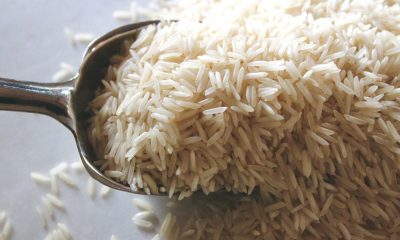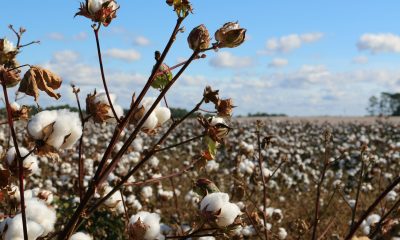Markets
Rice Market Dips Amid Light Speculative Selling and Mixed Trading Activity
Rice prices fell last week amid light speculative selling, with mixed daily trends and a downward weekly outlook. Weak Asian prices persist, while Brazil’s prices remain high but are less competitive globally due to a weaker Real against the US Dollar. Commercials and speculators participated on both sides of the market.
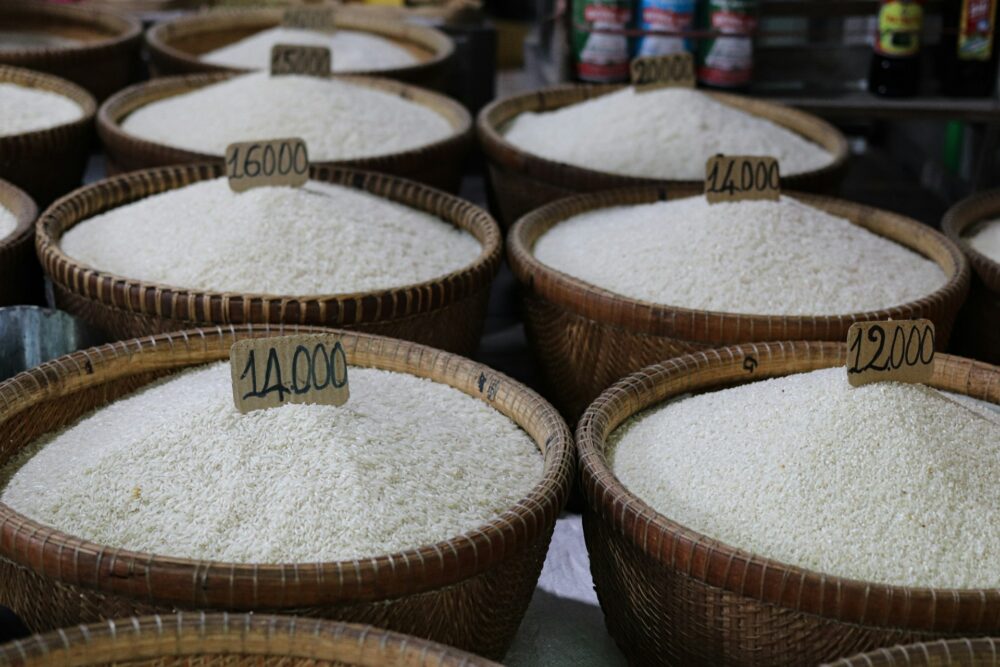
Wheat: The markets were lower last week on what appeared to be mostly speculative selling. There weas not any real news for buyers. World Wheat demand has been strong, but there has not been much demand in world markets for US Wheat. Tensions remined high between Ukraine, the US, and Russia. The growing conditions in the US are very good.
Reports of very beneficial rains for the Great Plains and Midwest and reports of steady to firm prices quoted in Russia and steady prices Argentina were around and helped keep the US market mostly steady in current ranges. Wheat farmers in the US planted the Winter crops under good conditions. Australia has seen too much rain recently that has downgraded Wheat quality, but Australia still has a very big crop to sell into world markets.
Weekly Chicago Soft Red Winter Wheat Futures
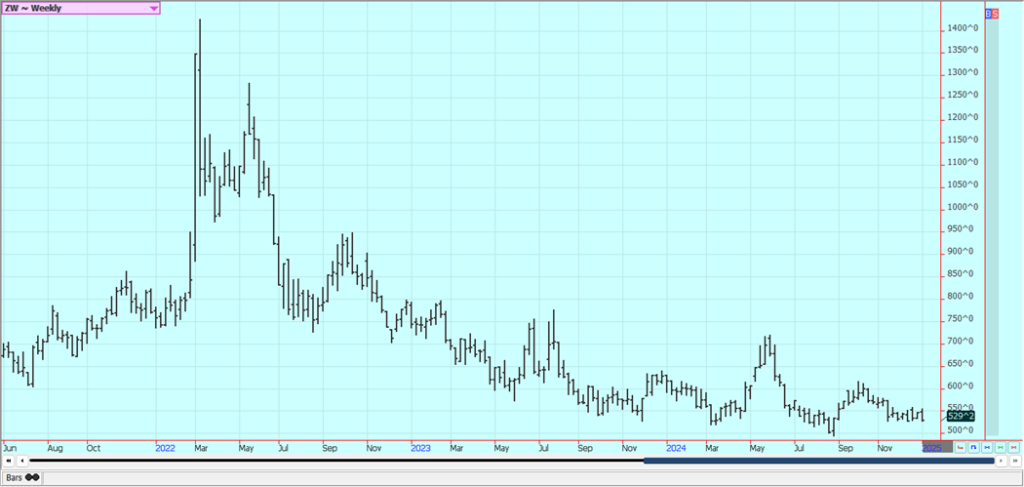
Weekly Chicago Hard Red Winter Wheat Futures
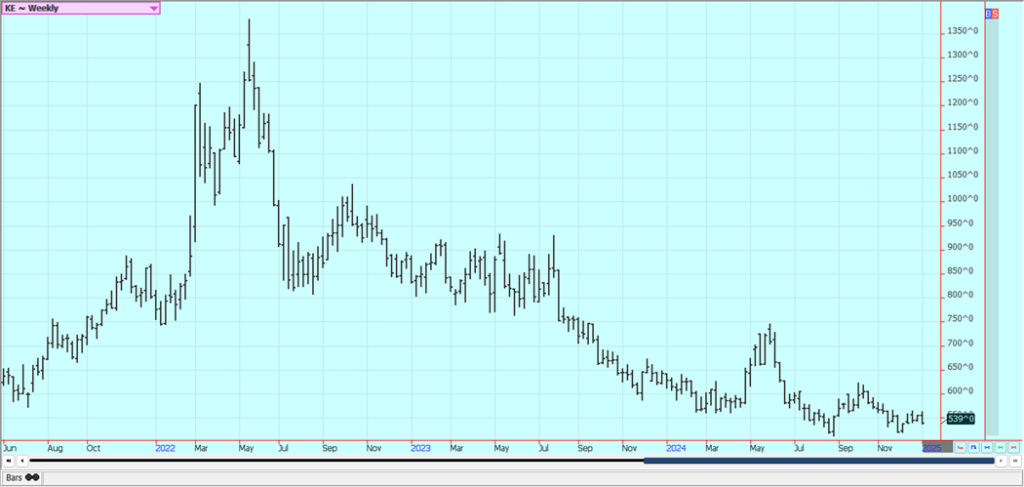
Weekly Minneapolis Hard Red Spring Wheat Futures
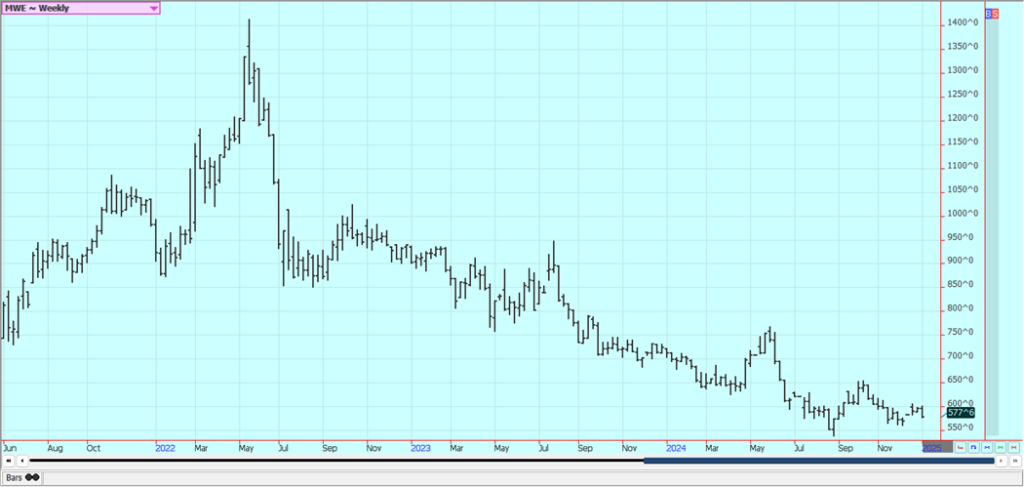
Corn: Corn closed a little lower last week, with much of the selling coming on Friday. It looked like the bulls were taking some profits and some producers were selling as well. The export sales report from USDA showed a big reduction in demand and many think that this could become a feature for the market.
The export demand in recent weeks has been very strong and it seems like some of the buying is in anticipation of the new presidential regime starting here in January. President Trump has promised new tariffs on goods and services and some buyers may be making purchases now to avoid the potential for the tariff later. It is about to turn very cold in the Midwest so it will get harder for Corn buyers to convince farmers to sell. Oats were a little lower.
Weekly Corn Futures
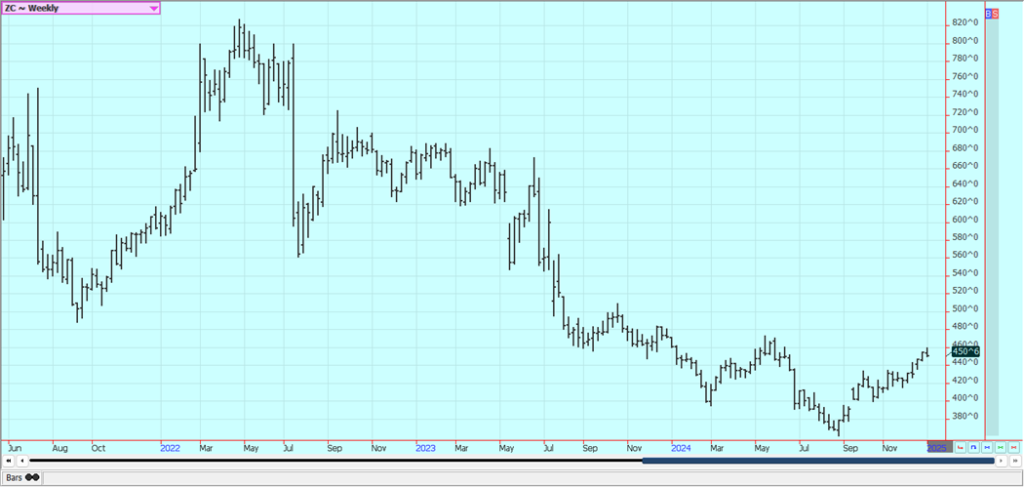
Weekly Oats Futures
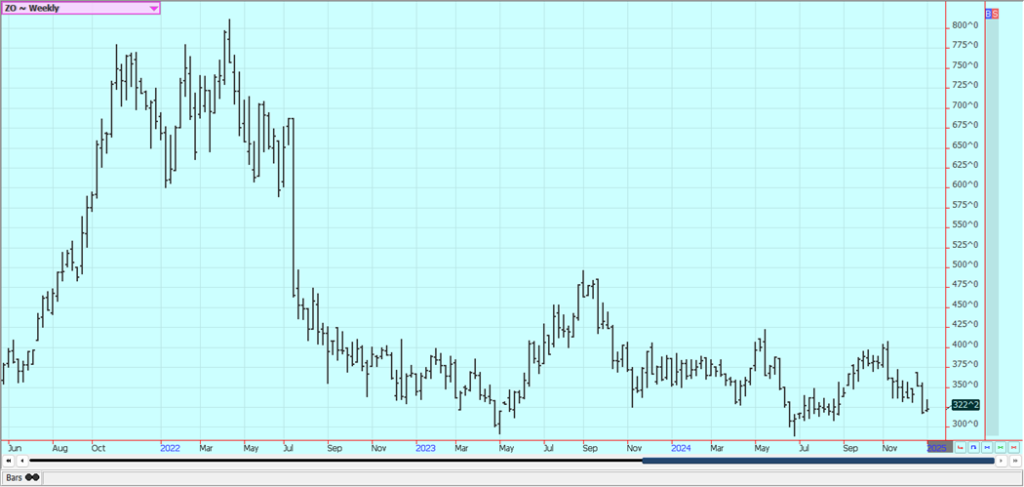
Soybeans and Soybean Meal: Soybeans closed about unchanged and the products closed a little lower last week. Supplies are very large now and look to get even bigger with the coming South American harvest. Talk that President Trump wants to stop the use of bio fuels as part of his war on the green economy hurt demand ideas for Soybean Oil. The tariffs that Trump plans to impose could be a detriment to sales of all products. Brazil looks to produce much more than a year ago and some estimates range as high as 175 million tons for the country.
Brazilian farmers have planted what is expected to be a very big crop in central and northern areas of the country. Warm and dry weather in the Midwest last year has hurt US production ideas due to ideas of small and very dry beans in the pods. Demand has been very strong so far this year, in part as many buyers try to get bought ahead of any new tariffs that the Trump administration might impose.
And are getting cheaper Soybeans from Brazil. Supplies are very large and ending stocks projections for the USDA WASDE reports are a burden for prices. However, farmers are not selling for tax reasons and now due to the very cold weather that will be seen in the Midwest over the next couple of weeks.
Weekly Chicago Soybeans Futures

Weekly Chicago Soybean Meal Futures
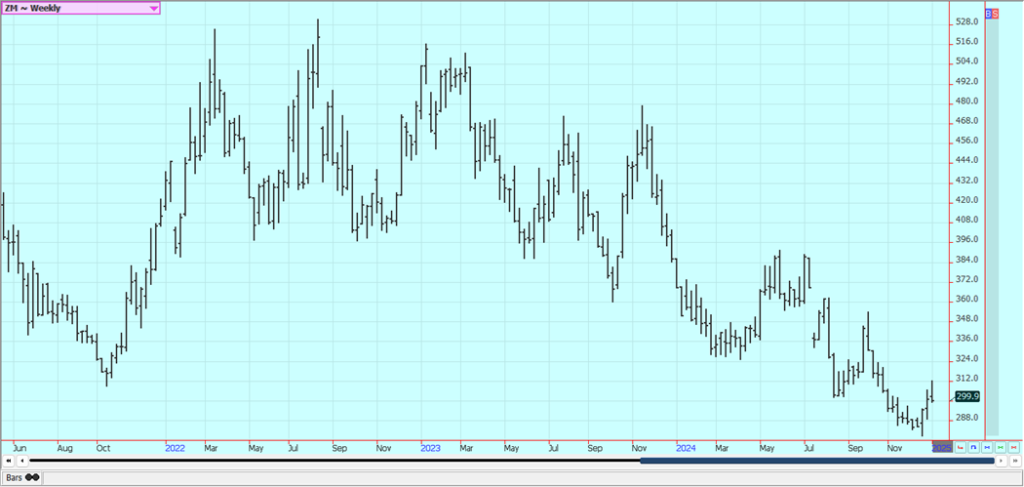
Rice: Rice closed lower last week in some light volume speculative selling. Commercials and speculators seemed to be on both sides of the market, but speculators seemed to be the better rice sellers.
The trends are mixed on the daily rice charts but down on the weekly charts. Generally weak Asian rice prices are still reported. Brazil rice prices remain strong and well above US prices, but the difference is now less to world rice buyers as the Real is much lower against the US Dollar.
Weekly Chicago Rice Futures
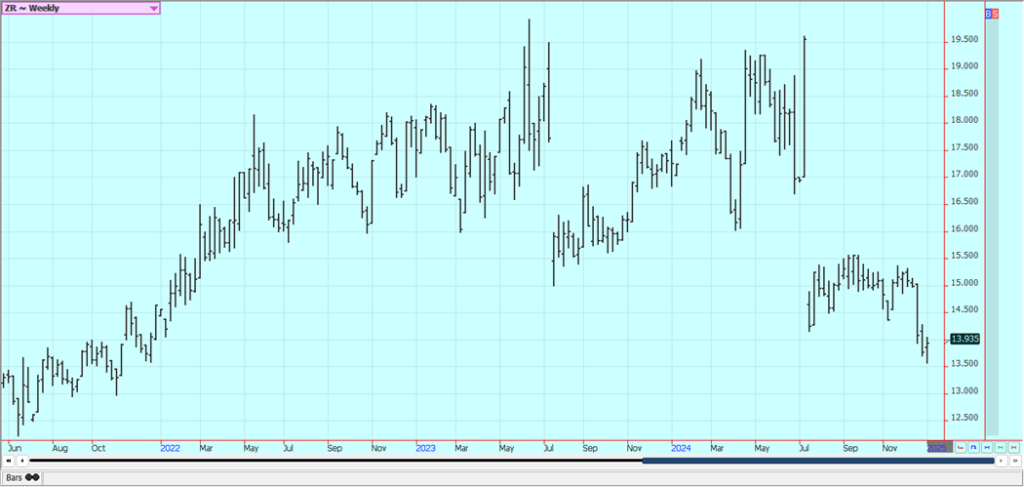
Palm Oil and Vegetable Oils: Palm Oil was lower last week on uncertainty about the bio fuels program in Indonesia. That country wants to use a blend of 40% of Plam Oil in its gasoline mixtures, but this has proved to be expensive and might need to be reduced and allow for increased exports.
Demand from China has not been good and demand from India has been reduced. Ideas of weaker production caused by too much rain and reports of good demand provided support. Chart trends are down. Canola was higher. The charts show that a low has been completed and a new uptrend could be underway. The harvest is over in Canada and the crops are locked away in the bin. Producers will try to wait for higher prices before selling much, especially with the cold weather in place now.
Weekly Malaysian Palm Oil Futures:
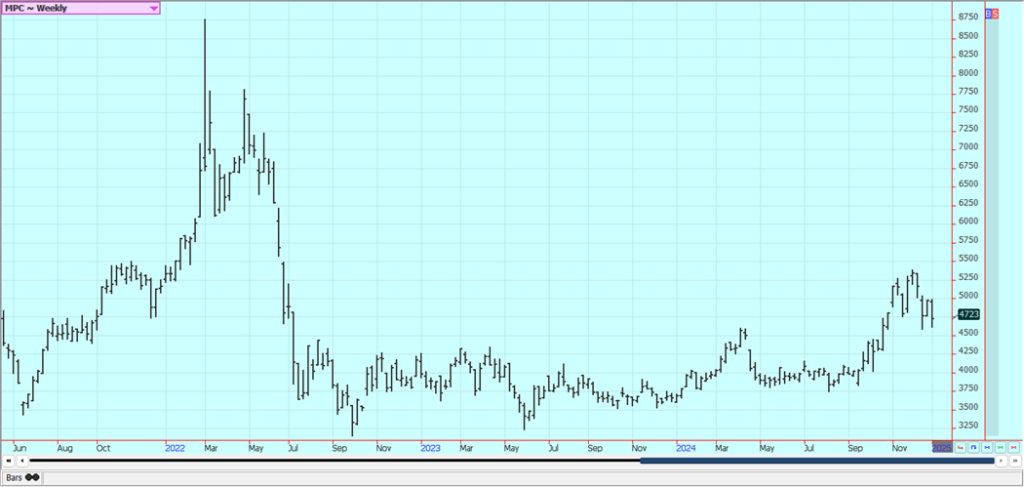
Weekly Chicago Soybean Oil Futures
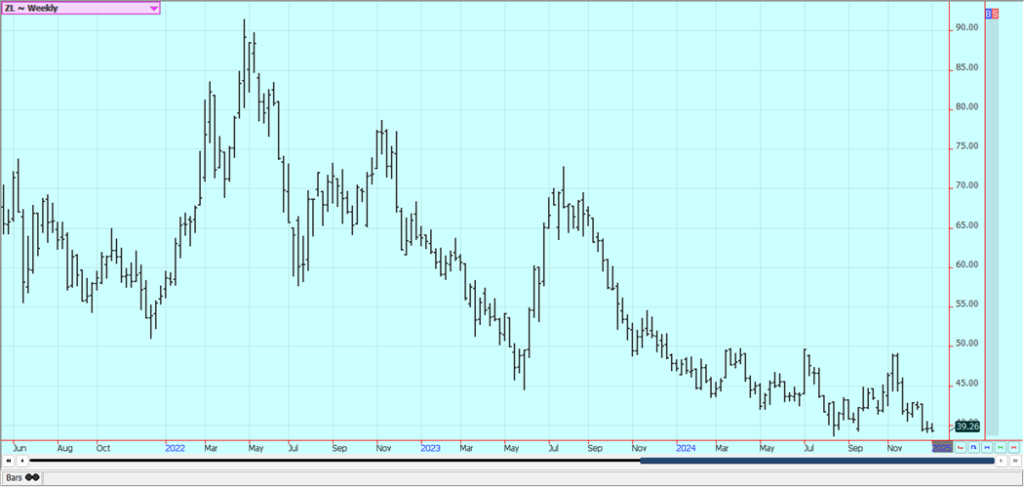
Weekly Canola Futures
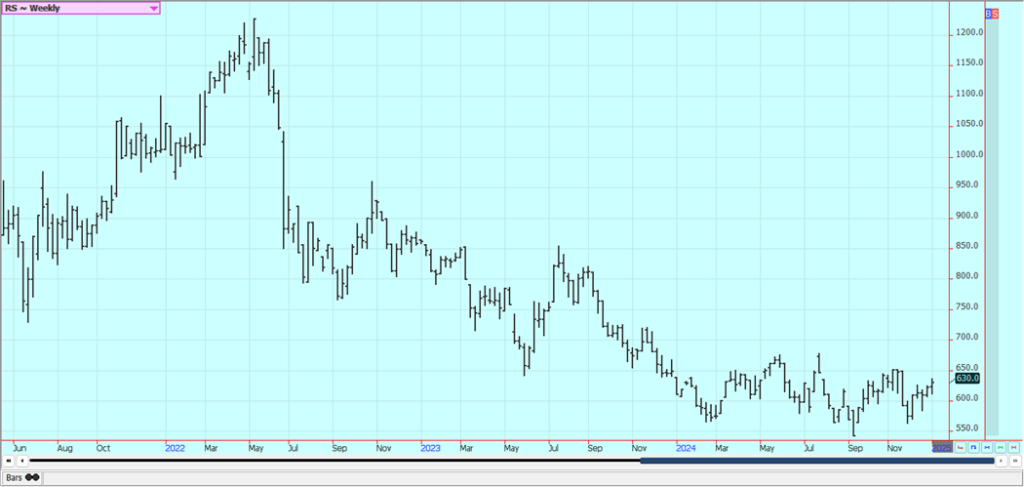
Cotton: Cotton was a little lower last week on speculative selling. The weekly export sales report did not show strong sales. Selling has come from news that Trump will impose some big tariffs on China, but the tariffs posted were not as high as he had threatened before during the campaign.
China has big problems with its domestic economy with consumer buying interest not strong and many people not working. The government has said it will take stimulus measures for the economy there next year. There are still reports of weaker demand potential against an outlook for good US production in the coming year.
Weekly US Cotton Futures
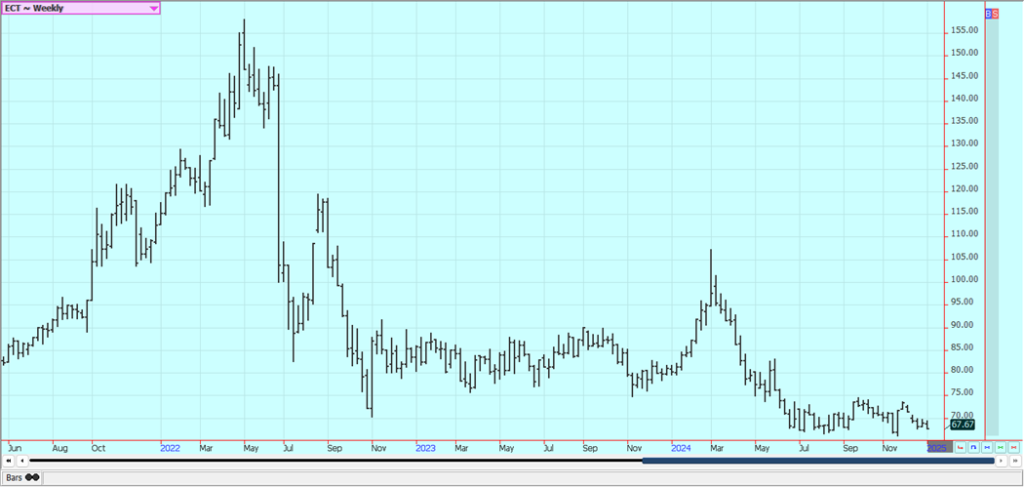
Frozen Concentrated Orange Juice and Citrus: FCOJ closed moderately lower last week. The chart trends remain down on the daily charts. The short term supply scenario remains very tight.
The market remains well supported in the longer term based on forecasts for tight supplies in Florida. The reduced production appears to be mostly at the expense of the greening disease and some extreme weather seen in the last couple of years. There are no weather concerns to speak of for Brazil or Florida right now.
Weekly FCOJ Futures
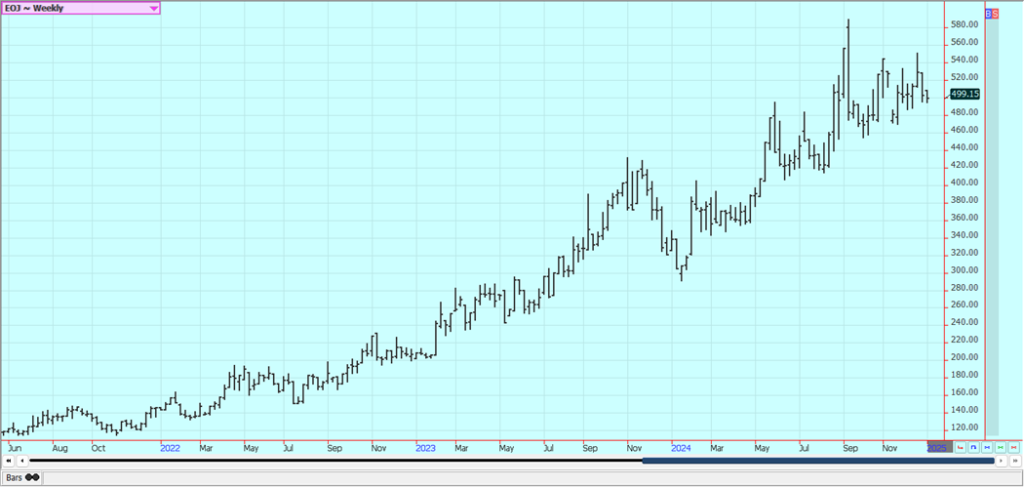
Coffee: New York was a little lower and London was near unchanged last week as tight Arabica availability went against tight Robusta availability as the harvest has stalled in Vietnam due to too much rain. The rains are also hurting the quality of the harvest as it is more difficult to dry and store the beans correctly.
Reports of reduced offers from Brazil on weather induced short crops continue and there are also reports of too much rain in parts of Central America damaging crops there. Conditions are now good in Brazil. There are reports from Brazil that producers are selling again as the Real has weakened and producers are now making record money in Real terms..
Weekly New York Arabica Coffee Futures
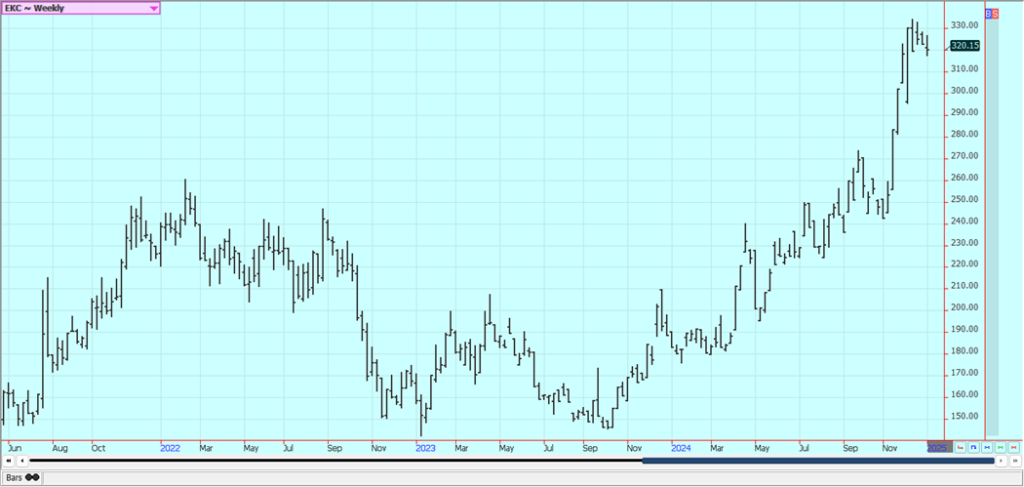
Weekly London Robusta Coffee Futures

Cocoa: New York closed much higher last week on what appeared to be speculative and commercial positioning. There is talk that production will be short of demand for the fourth year in a row. Chart trends are up in both mar-kets on the daily charts. Producers in Ghana and in Ivory Coast have been fighting against too much rain that has made it hard to harvest and deliver crops. It has been very dry in West Africa lately. The trade also noted ICE-certified cocoa stocks have been rising of late, but that overall cocoa supply is set to remain sharply constrained for several seasons due to structural problems in Ivory Coast and Ghana.
Weekly New York Cocoa Futures
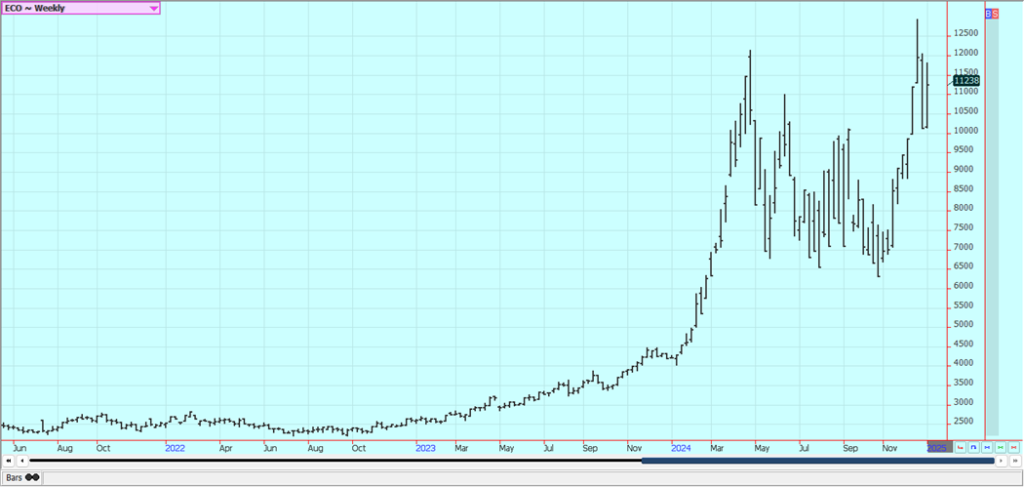
Weekly London Cocoa Futures
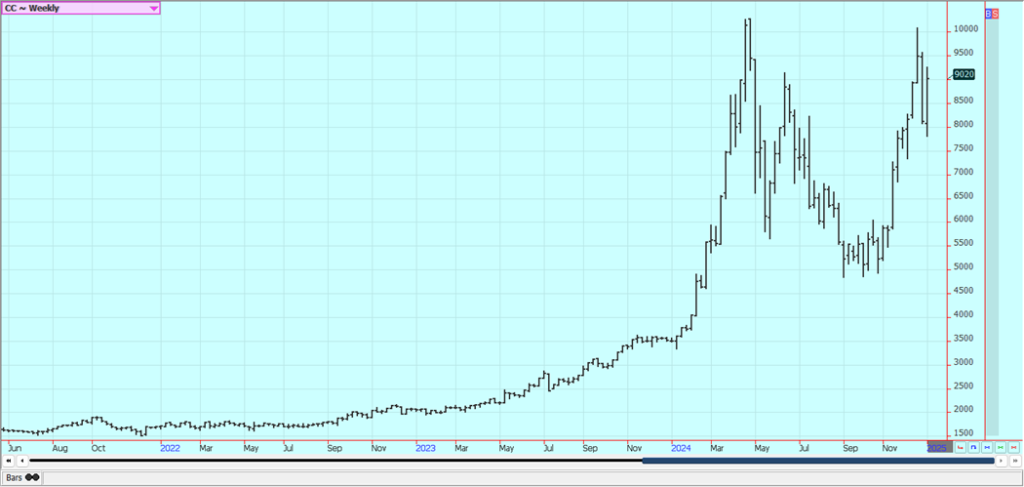
__
(Featured image by Nathan Cima via Unsplash)
DISCLAIMER: This article was written by a third party contributor and does not reflect the opinion of Born2Invest, its management, staff or its associates. Please review our disclaimer for more information.
This article may include forward-looking statements. These forward-looking statements generally are identified by the words “believe,” “project,” “estimate,” “become,” “plan,” “will,” and similar expressions, including with regards to potential earnings in the Empire Flippers affiliate program. These forward-looking statements involve known and unknown risks as well as uncertainties, including those discussed in the following cautionary statements and elsewhere in this article and on this site. Although the Company may believe that its expectations are based on reasonable assumptions, the actual results that the Company may achieve may differ materially from any forward-looking statements, which reflect the opinions of the management of the Company only as of the date hereof. Additionally, please make sure to read these important disclosures.
Futures and options trading involves substantial risk of loss and may not be suitable for everyone. The valuation of futures and options may fluctuate and as a result, clients may lose more than their original investment. In no event should the content of this website be construed as an express or implied promise, guarantee, or implication by or from The PRICE Futures Group, Inc. that you will profit or that losses can or will be limited whatsoever.
Past performance is not indicative of future results. Information provided on this report is intended solely for informative purpose and is obtained from sources believed to be reliable. No guarantee of any kind is implied or possible where projections of future conditions are attempted. The leverage created by trading on margin can work against you as well as for you, and losses can exceed your entire investment. Before opening an account and trading, you should seek advice from your advisors as appropriate to ensure that you understand the risks and can withstand the losses.

-

 Africa1 week ago
Africa1 week agoMorocco Allocates 1.3 Billion Dirhams to Boost Startup Ecosystem Under Digital 2030 Strategy
-

 Crypto1 week ago
Crypto1 week agoAAVE Community Challenges Aave Labs Over Governance and Control
-

 Crypto2 weeks ago
Crypto2 weeks agoCrypto ETF Inflows Signal Renewed Market Confidence
-

 Crowdfunding3 days ago
Crowdfunding3 days agoDeep Learning Italia Launches €400K Crowdfunding to Bridge Italy’s Tech Skills Gap


